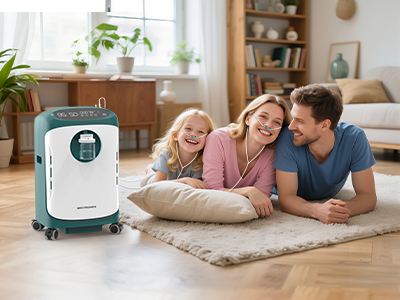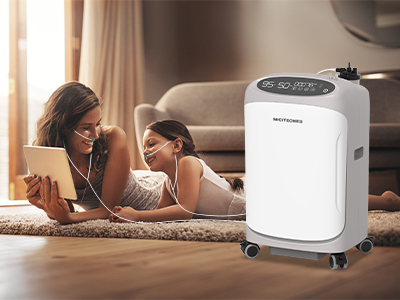21 Nov 2025
Children possess a magical ability to transform any environment—no matter how serene—into a landscape of curious chaos. Add an oxygen concentrator to the mix, and you’ve suddenly got a device that looks an awful lot like a spaceship control panel to small, imaginative minds. Ensuring the system stays safe, stable, and child-resistant becomes essential. With the right setup, you can protect your equipment, your home, and the small humans who insist on pressing every button they see.

Why Childproofing Matters with Oxygen Equipment
Kids explore the world with their hands, their feet, and occasionally their teeth. Oxygen equipment, full of buttons, tubes, and mysterious humming sounds, is basically a siren-song for tiny adventurers. A child pulling, twisting, chewing, or unplugging components can lead to disrupted therapy, damaged gear, or risky situations involving enriched oxygen.
Childproofing doesn’t imply distrust; it implies respect for childhood curiosity. The goal is to build an environment where pint-sized explorers can roam without turning your therapy setup into the set of a disaster movie.
Securing Cords and Tubing
Oxygen tubing has an unfortunate tendency to masquerade as a toy snake, jump rope, or lasso. Children notice this. They also notice how satisfying it is to tug on it.
To protect your tubing—and your sanity—run it along walls using adhesive clips. Keep it elevated wherever possible, reducing tripping hazards and decreasing the likelihood that a child will decide it’s the perfect object to tie around their stuffed bear. Avoid leaving unnecessary lengths coiled on the floor; tidy loops and well-guided lines keep everything neat and untempting.
Electrical cords should also be tamed. Use cord covers, wrap excess length securely, and keep plugs out of sight. Because nothing says “instant catastrophe” like a toddler unplugging your concentrator mid-breath.
Placing the Concentrator Out of Reach
Childproofing sometimes requires embracing the high ground—literally. Positioning your concentrator in a spot that’s inconvenient for small hands can work wonders. Whether it’s atop a sturdy cabinet, behind a protective baby gate, or nestled safely in a corner away from play zones, the goal is simple: distance.
Maintaining ventilation is crucial, so don’t stick it inside a closet or box like a forgotten toaster. Instead, aim for a location where airflow is unobstructed but foot traffic is limited. A well-placed concentrator stays cool, safe, and blissfully unmolested by curious fingers.
Using Covers and Guard Accessories
There’s an entire universe of childproofing accessories waiting to be deployed. Plastic guards add a shield around buttons to prevent spontaneous toddler adjustments. Decorative yet functional tubing sleeves can deter chewing and tangling. Protective concentrator covers—designed with ventilation slots—can obscure the machine’s most alluring features.
And don’t forget outlet covers to safeguard electrical points. These small plastic plugs are tiny guardians against unwanted investigations from junior electricians-in-training.

Teaching Kids Basic Rules of Safety
Even the best fortifications benefit from a little communication. Children understand more than they often let on. A simple explanation—tailored to their age—helps them grasp that the oxygen machine is essential equipment, not a toy.
Consistency matters. Praise compliance, reinforce boundaries, and don’t underestimate the power of a well-timed, dramatic “this machine helps us breathe!” announcement.
Routine Checks for Childproofed Equipment
Childproofing is not a one-and-done ritual. Children evolve. They learn. They grow taller. They discover new ways to circumvent your safeguards with the creativity of a tiny, benevolent supervillain.
Make weekly checks a habit. Ensure clips remain attached, cords are intact, covers are secure, and the concentrator hasn't been subtly relocated by a strong-willed toddler on a mission. Look for bite marks, tug marks, or any evidence of sabotage.
Routine inspections keep the system functioning optimally and prevent small issues from becoming major hazards.
Keywords: Oxygen Therapy
Originally published 21 Nov 2025, updated 21 Nov 2025.